The 4th of November was ‘Ask a Conservator Day’, an international social media campaign that acknowledges and celebrates the growing and innovative field of material conservation.
This year, the National Library of Australia’s conservators answered questions about conservation and digital preservation throughout the day across the Library’s Twitter, Instagram and Facebook. Here are some of the questions asked:
What does a conservator’s typical day look like?
Every day is different for our Collection Care staff. While a lot of their work is lab-based, they can also be found engaging with many other teams across the Library as they prepare material for the Library’s exhibitions, assist with digitisation projects, and facilitate direct access to material through our reading rooms.
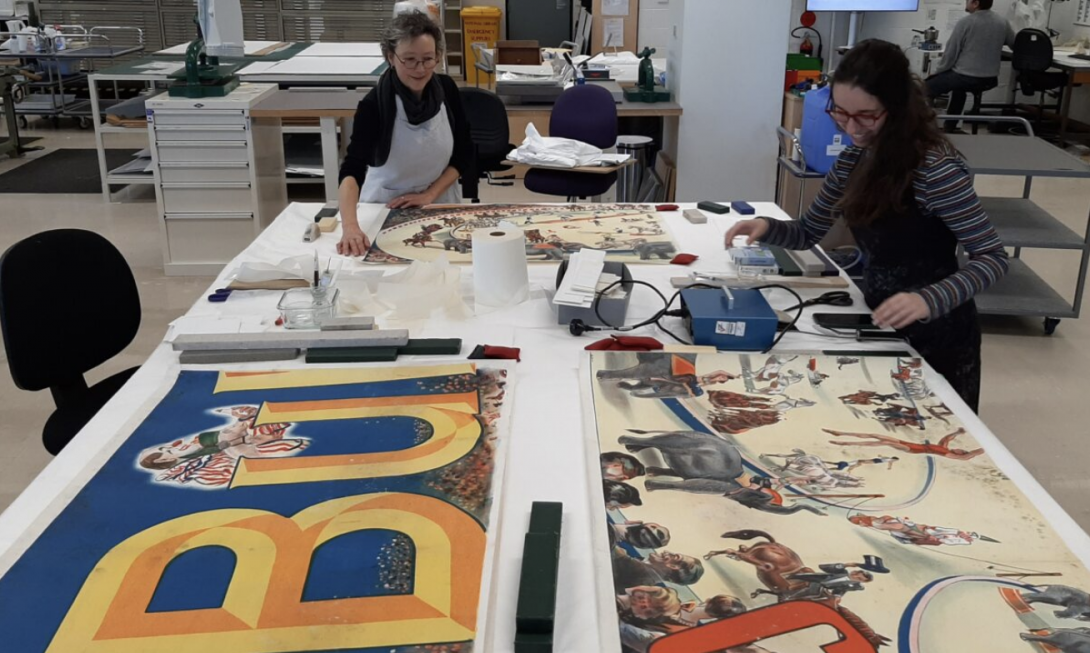
The team also carry out conservation treatments to stabilise vulnerable and damaged objects, as well as preventative tasks such as environmental monitoring, assessing collections for any hazards, and creating appropriate support and housing for objects to ensure the long-term preservation of our collection.
How are digital collections cared for?
In an increasing digital society, many of our collection items now come to us in a digital-only format. This material requires regular maintenance to ensure it remains accessible as digital technology evolves – enter our Digital Preservation team.
How do you become a conservator?
A conservator typically requires a university degree and will often then go on to do post-graduate studies. Our conservators have Masters degrees from the University of Melbourne, and others have undergraduate degrees from the University of Canberra plus, a range of additional diplomas and further study in related fields.
There are also a range of international institutions that offer Conservation training. One of our team members, Aurélie, studied conservation at the National Institute for Heritage in Paris. She is also currently completing a PhD on the history of bookbinding at the University of the Arts (London).
Conservators then specialise in an area of expertise. These tend to be either book and paper, objects, textiles, large technology, and paintings conservation. As one might expect, the Library’s Collection Care team are primarily book and paper conservators – a speciality that includes photography, artworks on paper, large flat works like maps, plans and posters, books and bound volumes and documents and ephemera.
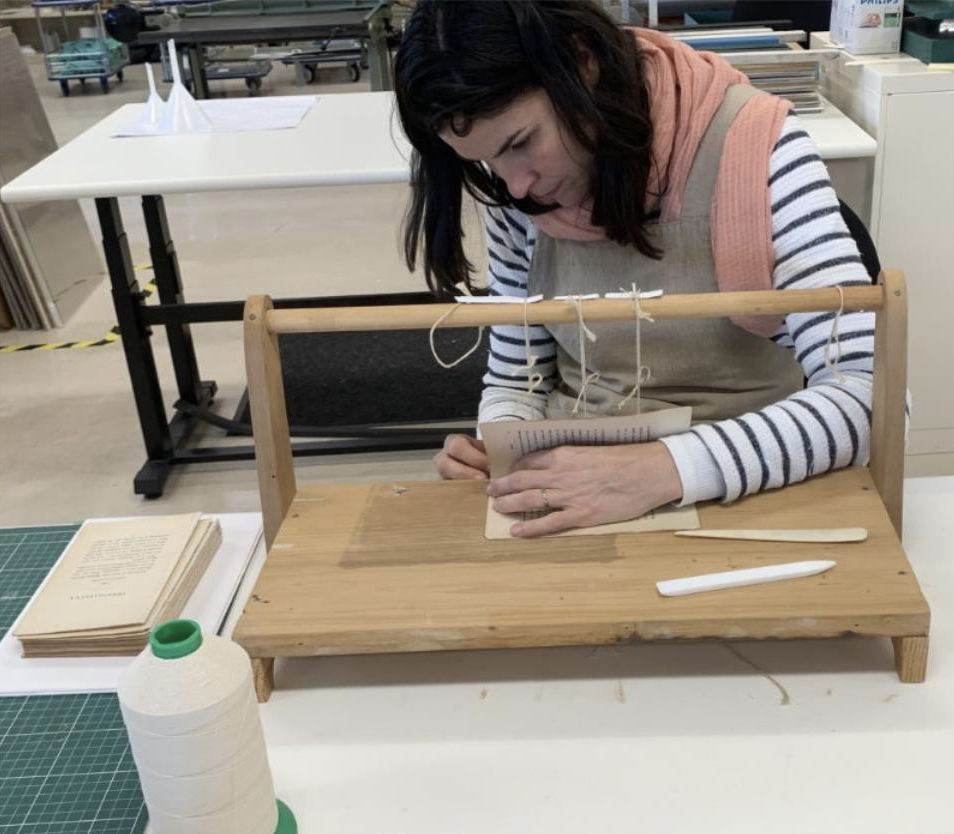
When asked why they chose to become a book and paper conservator, a common thread amongst responses was because it balanced hands-on skills with an understanding of chemistry and a mind for research.
Aurélie explains:
"I started training as a bookbinder while studying history. After some time, and being not sure about which path to take, I discovered that book conservation was actually in between the things that interested me. It was an interdisciplinary profession where you had to research objects, their history and manufacture, understand their chemistry and materials as well as the mechanism of degradation, while at the same time using manual skills. The perfect combination of hands and brain!"
Cheryl, who decided to become a conservator when she was still in high school, agrees with Aurélie’s hypothesis, saying:
“I had always enjoyed discovering things (like an archaeologist), doing jigsaw puzzles (putting things back together) and drawing, so... it was a great combination of art, craft and science."
What is your favourite kind of item to work on?
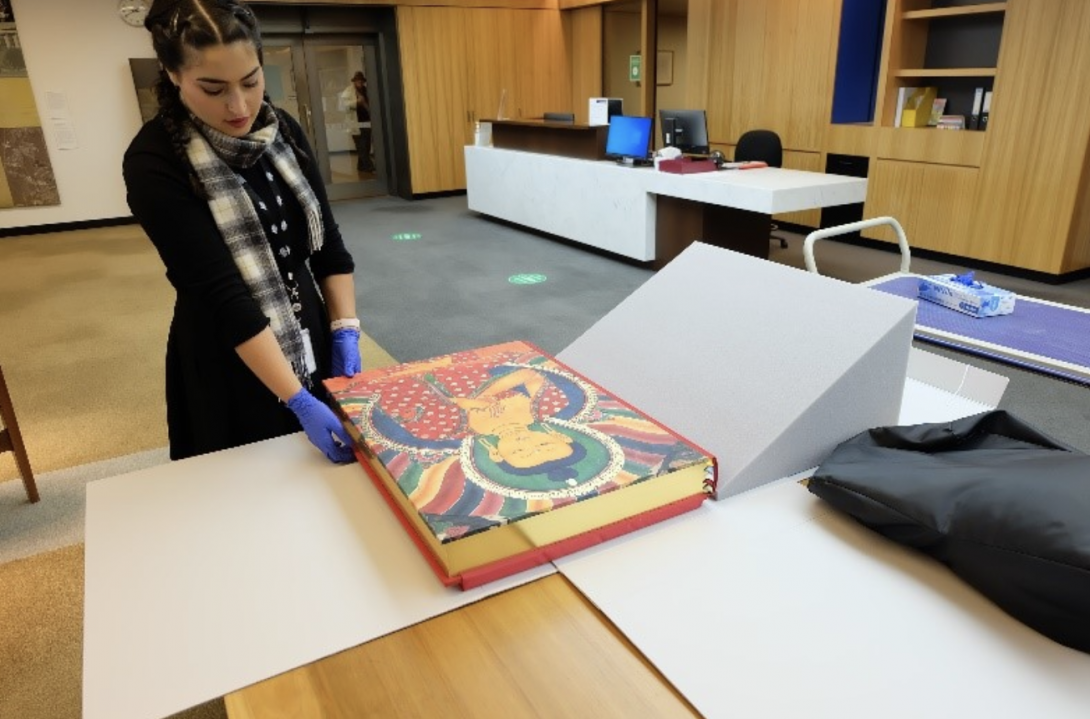
As you might expect, the quickest response to this question was ‘books’ - but when given some more thought our conservators also said:
- "Books are wonderful and often complex problems that require some time to think about and plan your approach. Some days a map or a letter is a wonderful and often more straightforward prospect, and more likely to be finished in one day." - Sara
- "I like working on items that require complex problem solving, particularly if they are oversized, or very small!" - Adele
- "I am more interested in particular treatment techniques than specific material types. I particularly enjoy working on backing removals and tear repairs" - Lisa
- "I love to work on archival material in bound volumes, especially the case-bindings covered in parchment as it is such a beautiful and complex material." - Aurelie
- "I have really enjoyed working with lantern slides and glass plate negatives. They are such interesting objects to treat and the images are great snapshots of time." - Alex
- "I enjoy surface cleaning photographs - removing the silvering out to expose hidden detail" - Cheryl
- "I like to work on items that are challenging to repair and need some investigation, such as removing backings from watercolours, and piecing together fragile letters. I like less complex items too such as cleaning glass plate negatives. Bringing an item back to life without destroying its history is a lovely feeling." - Janet
What surprising discoveries have you made in the collection?
There are countless surprises to be found in the collection. One that came to mind was the 120-year-old box of chocolate found at the bottom of a box of Banjo Paterson’s personal papers.
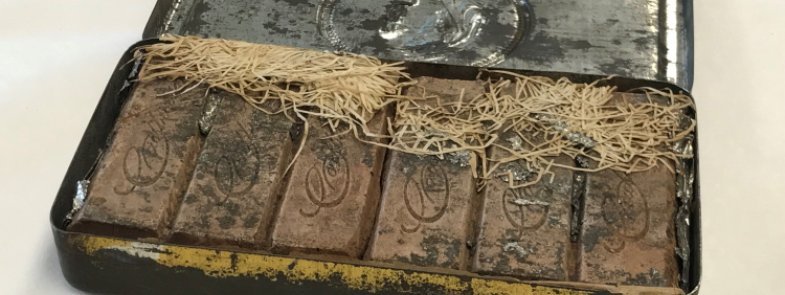
Describe a challenge you have solved...
Our Digital Preservation team answered this with a story about some of the oldest digital files in the collection. The files were from 1980, which may not sound that old - but digitally speaking, they're ancient.
“It took us quite a while to figure out what they were, and which software created them. It turned out that they were created by PC Writer, an early word editing software.”
This is notable because PC Writer was created before contemporary ‘what you see is what you get’ word editors, and as such only displays the text but with no formatting. Instead, the text is interspersed with outdated code to indicate the correct font, size, and formatting. The challenge with this system is that the formatting code only takes effect once the file is sent to print.
What is the oldest piece you have worked on?
The Library holds a collection of medieval parchment fragments that have been salvaged and recycled by book binders over the ages. One of the fragments was dated back to the 10th century by a visiting expert in Medieval manuscripts, Michelle Brown. Some of the fragments had painted areas that needed consolidation. Creases were also lightly humidified and flattened enough so that the fragments could be digitised for public access.
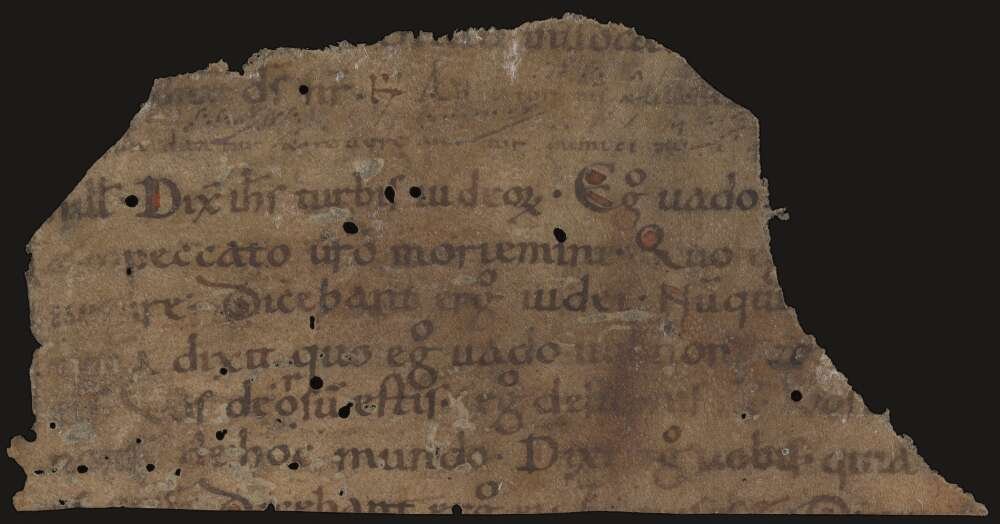
Which is more difficult and costly, physical or digital preservation?
Both physical and digital preservation of large collections can be complex and require significant resourcing including ongoing maintenance. However, due to the dependency on technology and format changes over time, digital collections are more at risk of becoming inaccessible. This differs from physical collection material which - where made of good quality material, and properly stored and handled - is fairly stable and can last a long time without being reliant on technology.
It could be argued that digital preservation will require more frequent interventions and that, over the long term, it could prove to be more costly. On the other hand, digital collections are more amenable to large-scale, automated preservation actions… so the jury is still out!